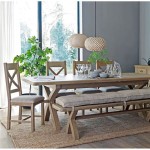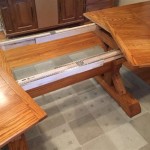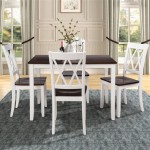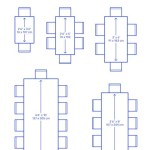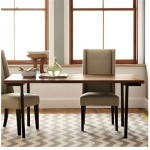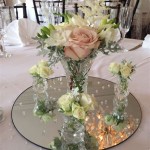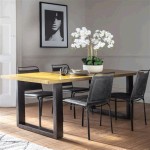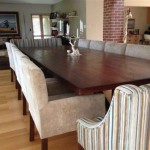Mid Century Style Dining Table
Mid-century modern design emerged in the United States in the post-World War II era, characterized by its clean lines, organic forms, and use of natural materials. Dining tables from this period reflect these design principles, offering a stylish and functional centerpiece for your dining room.
Key Features of Mid Century Style Dining Tables
Clean Lines and Geometric Shapes: Mid-century tables often feature simple, geometric shapes, such as rectangles, ovals, and circles. The lines are typically clean and unadorned, creating a minimalist and airy aesthetic.
Organic Forms: While many mid-century tables have geometric lines, they also incorporate organic elements, such as curved edges or tapered legs. This combination creates a sense of balance and visual interest.
Use of Natural Materials:
- Wood: Walnut, teak, and oak were popular woods for mid-century furniture. These woods offer a warm and natural look, and they patina beautifully over time.
- Metal: Metal was also commonly used in mid-century furniture, particularly for legs and frames. Chrome, brass, and stainless steel were popular choices, adding a touch of glamour and sophistication.
Types of Mid Century Style Dining Tables
Mid-century dining tables come in a variety of shapes and sizes to accommodate different dining spaces and needs:
Rectangular: Rectangular tables are a classic choice, offering ample seating for family and friends. They can be found in various sizes, from intimate two-seaters to large tables that can accommodate eight or more.
Oval: Oval tables have a more organic shape than rectangular tables, creating a softer and more inviting ambiance. They are particularly well-suited for smaller dining rooms, as their curved edges help to save space.
Round: Round tables are a great option for small to medium-sized dining areas. They foster a sense of intimacy and conversation, as all guests can easily see and interact with each other.
Extendable:
- Drop Leaf: Drop leaf tables feature hinged leaves that can be raised or lowered to adjust the size of the table. This makes them a great option for smaller spaces that require occasional extra seating.
- Butterfly Leaf: Butterfly leaf tables have a hidden leaf that folds out from the center, creating a larger surface area when needed.
Choosing a Mid Century Style Dining Table
When choosing a mid-century dining table, consider the following factors:
Size and Shape: Determine the size and shape of the table that best fits your dining space and seating needs.
Material: Choose a material that complements your existing décor and personal style. Wood, metal, and glass are all popular options for mid-century dining tables.
Functionality: Consider the functionality of the table. If you need extra seating occasionally, an extendable table might be a good choice.
Style: Select a table that aligns with your overall décor. Mid-century modern tables can range from classic to more contemporary designs.
With its clean lines, organic forms, and use of natural materials, a mid-century style dining table can add style and functionality to your dining room. Consider the factors discussed above to find the perfect table for your space and needs.

Mid Century Expandable Dining Table 39 92

Extra Deep Mid Century Expandable Dining Table 72 92 Acorn West Elm

Mid Century Expandable Dining Table 99 Cm 234 West Elm Uk

Mid Century Rounded Expandable Dining Table 42 80 West Elm

31 Mid Century Modern Dining Tables For A Timeless Room Refreshinterior Design Ideas

31 Mid Century Modern Dining Tables For A Timeless Room Refresh
:max_bytes(150000):strip_icc()/Flatshoot12-a1c2e34b357041998a9b3f89c716a9de.jpg?strip=all)
38 Midcentury Modern Dining Rooms That Transcend Time

Mid Century Modern Dining Room Ideas Decor

Modway Lippa Mid Century Modern 78 Oval Dining Table In Black White

Qnn500 Quinn Mid Century Modern Dining Table With Bench

